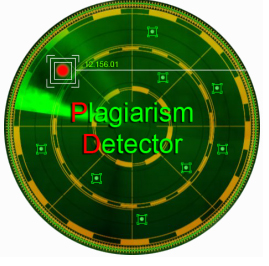Interactional Metadiscourse used in Bloomberg International Debate
Abstract
In delivering an argument, several things must be known, such as the theme, the purpose, and the content of the argument in a debate. Since debate demands critical thinking, debaters need to consider their words’ choice in delivering their argument. In that case, this research aims to analyze the uses of interactional metadiscourse markers that are applied in the Bloomberg International Debate. In doing the analysis, the writers used the descriptive method and proposed Hyland’s theory (2005). As the result of the research, it shows that the most speaker who is producing interactional metadiscourse markers is Ella Cox, followed by John Allan and then Ndidie Okezie and finally Auday and Rus Ma. Although there are three speakers in each team (both proposition and opposition), it seems that the third person on each team only as support and the one who then summarizes the result of the debate for each team. Further, related to the uses of interactional metadiscourse, the most used of the interactional dimension markers is self-mention, followed by booster, hedges, and booster.
Keywords: Bloomberg, critical thinking, debate, interactional metadiscourse, metadiscourse markers
Full Text:
PDFReferences
Ädel, A. (2006). Metadiscourse in L1 and L2 English. Amsterdam, Netherlands: Benjamins. Afrianto & Inayati, A. (2019). Existential process in Harry Potter and the Chamber of Secret: A systemic functional linguistic study. Teknosastik: Jurnal Bahasa dan Sastra, 14(1), 26-31.
Crismore, A., Markkanen, R. & Steffensen, M.S. (1994). Metadiscourse in Persuasive Writing: A Study of Texts Written by American and Finnish University Students. Written Communication, 10-39. Fitri, Ernawati & Qodriani, L. U. (2019). A study on flouting maxims in Divergent novel. Teknosastik: Jurnal Bahasa dan Sastra, 14(1), 32-40.
Freeley, A. J. & Steinberg, D. L. (2013). Argumentation and debate. U.S: Cengage Learning.
Hashemi, M. R. & Golparvar, E. (2012). Exploring metadiscourse markers in Persian news reports. International Journal of Social Science Tomorrow, 1(2), 1-6.
Hyland, K. (1998). Hedging in Scientific Research Articles. Amsterdam: John Benjamins.
Hyland, K. (2005). Metadiscourse. London: Continuum.
Hyland, K. (2015). Metadiscourse.: The International Encyclopedia of Language and Social Interaction, First Edition. Hong Kong: University of Hong Kong.
Hyland, K. & Tse, P. (2004). Metadiscourse in academic writing: a reappraisal. Applied Linguistics, 25(2), 156-177.
Kuswoyo, Heri & Siregar, R. A. (2019). Interpersonal metadiscourse markers as persuasive strategies in oral business presentation. Lingua Cultura, 13(4), 297-304.
Kuswoyo, Heri & Susardi, S. (2018). Thematic progression in EFL students’ academic writings: A systemic functional grammar study. Teknosastik: Jurnal Bahasa dan Sastra, 14(2), 39-45.
Mina, G. K. & Biria, R. (2017). Exploring interactive and interactional metadiscourse markers in discussion sections of social and medical science articles. International Journal of Research in English Education, 2(4), 11-29.
Mirshamsi, A. S. & Allami, H. (2013). Metadiscourse markers in the discussion/conclusion section of Persian and English master's theses. Journal of Teaching Language Skills, 32(3), 23-40.
Pérez-Llantada, C. (2003). Communication skills in academic monologic discourse: Empirical and applied perspectives. Circulo de Lingüística Aplicada a la Comunicación, 3(15), 1-14.
Rido, Akhyar. (2020). "Why they act the way they do?": Pedagogical practices of experienced vocational english language teachers in Indonesia. International Journal of Language Education, 4(1), 24-37.
Salichah, I., Irawati, E., & Basthomi, Y. (2015). Hedges and boosters in undergraduate students’ research articles. Jurnal Pendidikan Humaniora, 3(2), 154-160.
Sari, Aryati Meiga. (2014). Interactional Metadiscourse Markers Used in Michele Obama’s Speech. Semarang: Dian Nuswantoro University.
Thompson, G. (2001). Interaction in academic writing: learning to argue with the reader. Applied Linguistics, 22(1), 58-78.
Unggul, G. Mekaria & Gulö, Ingatan. (2017). An Analysis of gerund and to infinitive in argumentative essays. Teknosastik: Jurnal Bahasa dan Sastra, 15(1), 1-6.
Zareifard, R. & Alinezhad, B. (2014). A study of interactional metadiscourse markers and gender in the defense seminars of Persian speakers. Journal of Educational and Social Research, 4(1), 231-231.
DOI: https://doi.org/10.33365/llj.v1i1.160
Refbacks
- There are currently no refbacks.
Linguistics and Literature Journal
Published by Universitas Teknokrat Indonesia
Organized by Faculty of Arts and Education
Jl. Zainal Abidin Pagaralam, No.9-11, Labuhanratu, Bandarlampung, Indonesia
Telepon : 0721 70 20 22
W : http://jim.teknokrat.ac.id/index.php/linguistics_and_literature/index










